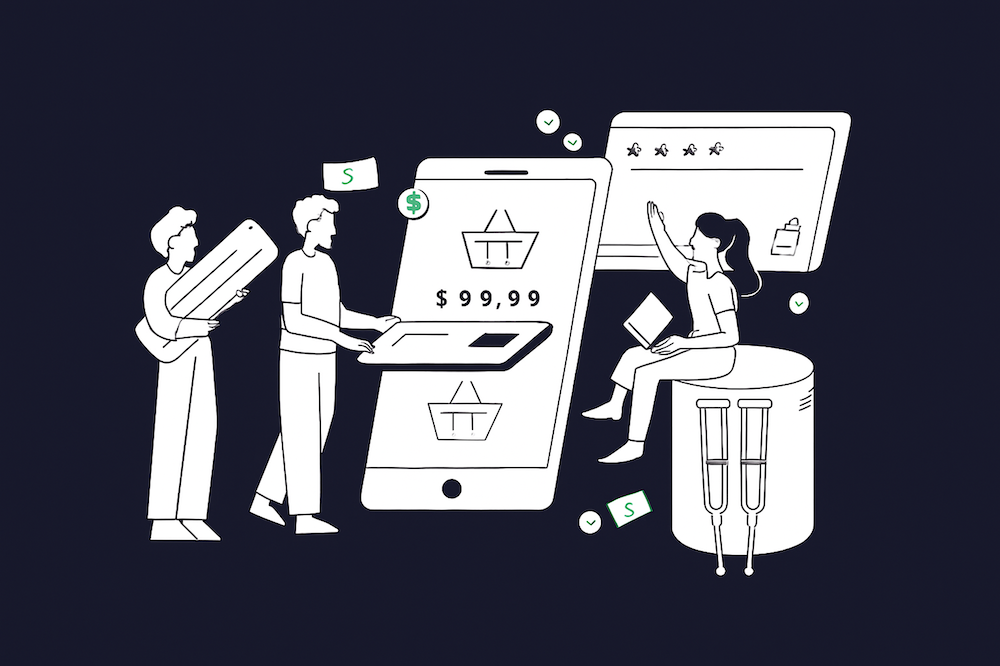[.green-span]How Vertical SaaS Companies Can Unlock Hidden Revenue with Embedded Lending[.green-span]

How Vertical SaaS Companies Can Unlock Hidden Revenue with Embedded Lending
Vertical SaaS platforms see 40-45% ARPU growth within 12 months of embedding lending solutions. This comprehensive guide reveals how brokers can identify, monetize, and de-risk embedded lending opportunities for their SaaS clients. We'll explore the proven framework for launching lending products, selecting the right infrastructure partner, and leveraging industry-specific data for competitive advantage. With Lendflow's API-first platform, your SaaS clients can launch embedded lending in 4-8 weeks rather than 12-18 months.
Why Embedded Lending Is a Game Changer for Vertical SaaS
The urgency is clear: SMBs need capital, and SaaS platforms must provide it to remain competitive. Traditional banks reject 80% of small business loan applications, creating a massive opportunity for vertical SaaS platforms to fill this gap. Embedded lending transforms SaaS platforms from software vendors into comprehensive business partners, dramatically improving customer retention and revenue per user.
Defining Embedded Lending
Embedded lending is the seamless integration of credit products—loans, cash advances, or lines of credit—directly inside a software workflow, eliminating the need to leave the platform. Unlike traditional referral lending where customers are directed to external lenders, embedded lending keeps the entire experience within your platform's ecosystem. This differs from revenue-based financing by offering flexible repayment terms tied to business performance rather than fixed monthly payments.
The embedded finance market reached $104.8 billion in 2023 and is projected to grow at 23.3% CAGR through 2030, driven by increasing demand for seamless financial experiences.
Why Vertical SaaS Is Uniquely Positioned
Vertical SaaS platforms possess unparalleled data depth that creates ideal underwriting signals. Unlike horizontal SaaS solutions, vertical platforms collect payments, invoicing, inventory, and usage data specific to their industry. This domain expertise enables natural loan trigger points: seasonal cash flow needs in restaurant POS systems, inventory restocking cycles in eCommerce platforms, or equipment financing in construction management software.
Market Momentum and Timing
The North American embedded fintech market reached $36.9 billion in 2024, growing at 31% CAGR. Regulatory tailwinds like open banking initiatives and mature API infrastructure now enable 4-6 week launches versus years of development time previously required.
The window to differentiate is closing as more SaaS peers add financial services. First movers gain significant competitive advantages through customer lock-in and expanded revenue streams. Explore Lendflow's documentation to understand implementation timelines for your specific use case.
How Embedded Lending Expands Revenue and Retention
Embedded lending is projected to drive $500 billion in annual revenue by 2030. SaaS platforms capture value through multiple revenue streams while dramatically improving customer lifetime value and reducing churn.
New Income Streams—Interest, Origination, Interchange
Revenue StreamTypical RangeFrequencyInterest Spread3-7% annuallyRecurringOrigination Fee1-5% of loan amountPer loanCard Interchange1.5-3% of transactionsPer transaction
Unlike one-time SaaS license fees, lending generates recurring revenue throughout the loan lifecycle. Interchange uplift from tied-in spend cards provides additional ongoing income as borrowers use platform-issued cards for business expenses.
Boosting ARPU and Reducing Churn
Platforms implementing embedded accounting and lending integrations see 40-45% ARPU increases within 12 months. The lock-in effect is powerful: borrowers log in 2-3× more frequently during repayment periods, increasing platform engagement and reducing churn risk.
Toast saw restaurants process 12% more transactions through its POS after receiving working-capital loans, demonstrating how access to capital directly drives platform usage and revenue.
Competitive Differentiation and Stickiness
Marketplace lenders lack operational context that vertical SaaS platforms possess, making their underwriting less accurate and offers less compelling. Here's the blueprint to launch successfully.
Framework to Launch Lending in Your SaaS Platform
Successful embedded lending launches follow a three-step journey: Data mapping, build-versus-partner decisions, and compliance implementation. Each step requires specific expertise and careful execution.
Map Existing Data and Eligibility Signals
Data SourceUnderwriting ValueCollection MethodPayment ProcessingRevenue verificationDirect APIBank ConnectionsCash flow analysisOpen bankingUsage MetricsBusiness stabilityPlatform analyticsIndustry DataRisk benchmarkingNAICS classification
Lendflow's Industry Map and DataGraph APIs unify and enrich these data sources, filling gaps automatically through external data partnerships while providing 90%+ accuracy in business classification and risk assessment.
Frequently Asked Questions
How long does it take to go live with embedded lending?
Lendflow's API-first infrastructure enables most vertical SaaS platforms to launch embedded lending in 4–8 weeks, compared to 12–18 months for custom builds. The timeline depends on existing data integrations, compliance requirements, and feature complexity.
What licenses or regulatory coverage do we need?
Lendflow's sponsor bank partnerships eliminate the need for your own lending license while providing full regulatory coverage. Your platform maintains compliance with KYC/KYB requirements, data privacy regulations, and industry-specific standards.
How do we manage credit risk without a lending team?
Lendflow's AI-driven Trust Score automates 90%+ of credit decisions and multi-lender routing handles risk allocation across partner networks.
What data do we need to start scoring customers?
Transaction history, bank account data, and NAICS codes provide sufficient signals for initial credit models. Lendflow's DataGraph automatically enriches data gaps and leverages payment processing volumes, subscription usage patterns, seasonal trends, and customer tenure.










.png)



